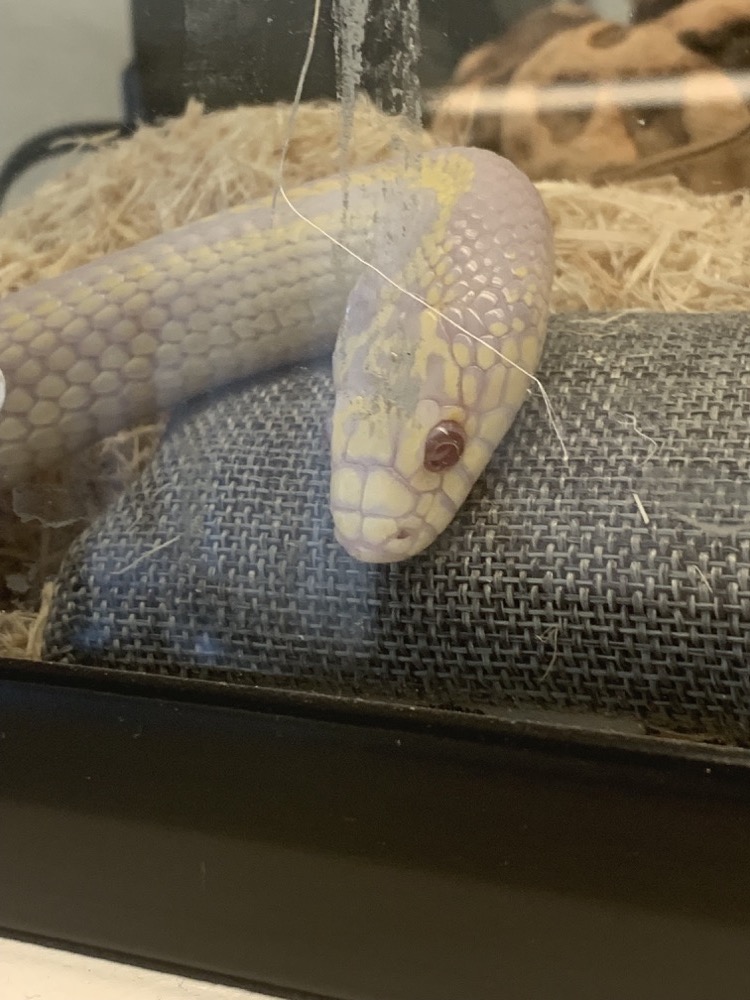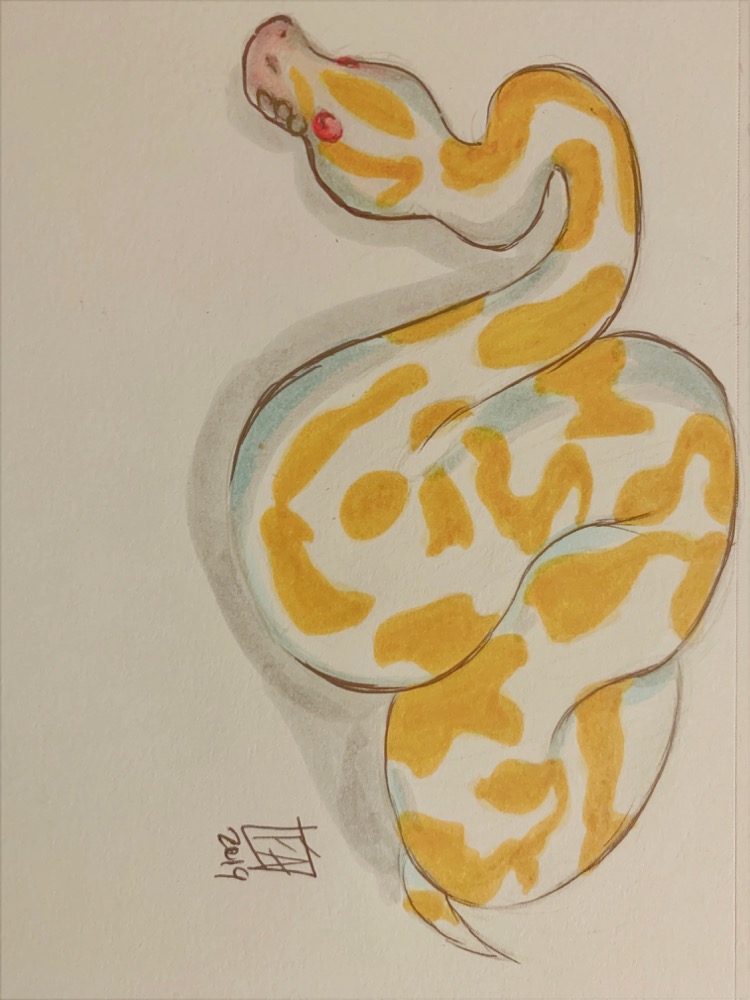Summer is one of three ambassador snakes here at Cabrillo National Monument. Our ambassador snakes’ goal is to help educate visitors about local snake species and to help erase harmful misconceptions about local snakes. 
NPS Photo/Felix Asadi - A photo of Summer during her mini photo shoot for this field note.
About Summer and Her Species
Summer is a ten year-old female albino California Kingsnake (Lampropeltis getula californiae). California Kingsnakes inhabit the far southwest parts of the United States, including most of California, Nevada, Arizona, parts of Utah, all of Baja California, and northwest Mexico. The title of “Kingsnake” comes from the fact that kingsnakes are known as “the king of all snakes”. They will literally eat other snakes. Kingsnakes are immune to rattlesnake venom and eat many species of snakes, including rattlesnakes, gopher snakes, and other Kingsnakes. Besides snakes, the kingsnake’s diet consists of rodents, small mammals, lizards, eggs, and birds.
NPS Photo/Felix Asadi - Boros in his terrarium here at the park.
What is Albinism? (And Exceptions to the Rule)
Summer has albinism, a genetic mutation that prevents the production of melanin (a pigment that gives an animal its color) in her cells. Since her cells cannot produce melanin, she is a bleached white color with pale yellow stripes down her back. Any species of animal can be albino, including humans and reptiles, but not all albino animals are all white.
Specifically with reptiles and amphibians, melanin isn’t the only pigment these creatures create. Some species of reptiles produce carotenoids, or “red-orange pigments”. Since these pigments are not affected by albinism, snakes with high amounts of carotenoids will still appear brightly colored, like albino ball pythons. 
A nature journal drawing of an albino Ball Python. Its main scale pattern is white with golden yellow markings, as opposed to the dark brown and orange of other Ball Pythons. (Art credits: Felix Asadi)
One consistent “tell” for albino animals that you can observe with your naked eye is, well, eyes. All albino animals will have red or pink eyes because the lack of pigment allows blood vessels to be visible through the whites of the eye (the sclera). (Some animals have more opaque sclera which causes a grey color or a bluish color instead.)
What Does Partial Albinism Look Like?
Because albinism affects all melanin production in an animal’s cells, this means that partial albinism cannot exist. This phenomenon is known as leucism, the partial loss of all types of pigmentation, including carotenoids. Leucism causes white coloration, white patches, spots, or splotches on the skin or fur. Leucism is also discernible from albinism because leucism does not affect the pigment cells in the eyes.
Survival of Albino California Kingsnakes in the Wild
Most albino California Kingsnakes don’t survive long in the wild. Their pale coloration makes them stand out in their naturally sunny habitat, causing them to be easily spotted by predators and potential prey. Another survival risk that albino California Kingsnakes have to face is vision impairment and blindness. Because albinism affects the melanin in the eye, (which helps focus light properly in the eye) all animals with albinism have blindness or vision impairment. Summer is almost completely blind due to her albinism.
The only example of albino kingsnakes thriving in the wild is on one of the Canary Islands in Spain. Captive snakes were let loose on the island by illegal pet traders and have completely wrecked the ecosystem.
The National Park Service’s mission is to preserve and protect all organisms in our national park’s ecosystems. To do this we must educate ourselves about the plants and animals that call Cabrillo National Monument home.
Sources:
California Kingsnakes:
http://www.californiaherps.com/snakes/pages/l.californiae.html
Examples of Leucism in the wild:
Albinism versus Leucism:
https://feederwatch.org/color_variant/albinism-and-leucism/
https://www.nationalgeographic.com/animals/reference/albino-animals/
Carotenoid Pigments in Snakes:
https://www.livescience.com/44008-corn-snakes.html
Canary Islands’ California Kingsnake Infestation:
https://www.latimes.com/science/la-me-kingsnake-20140428-story.html

